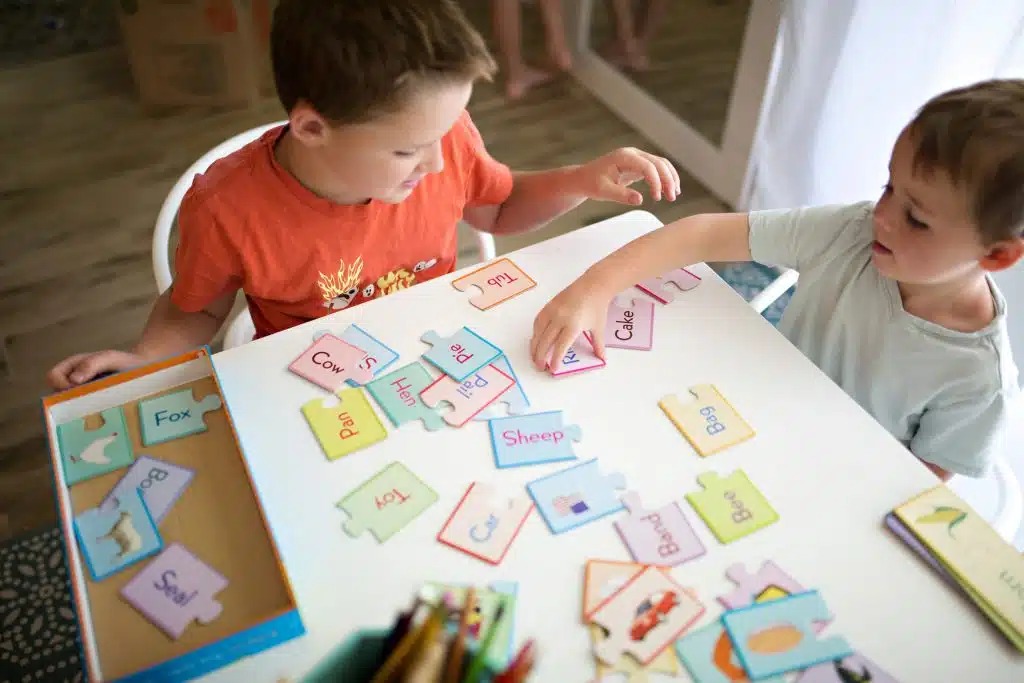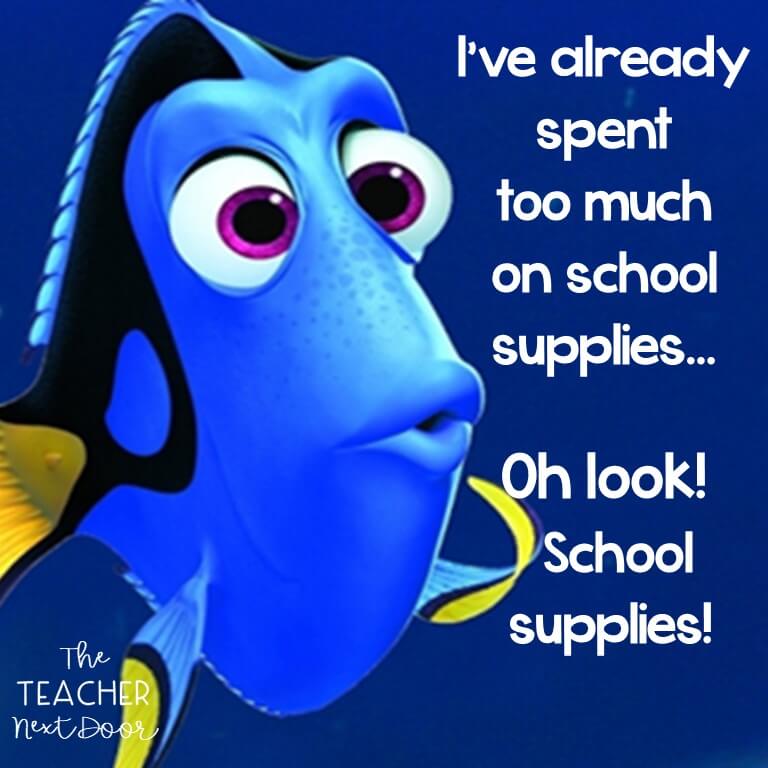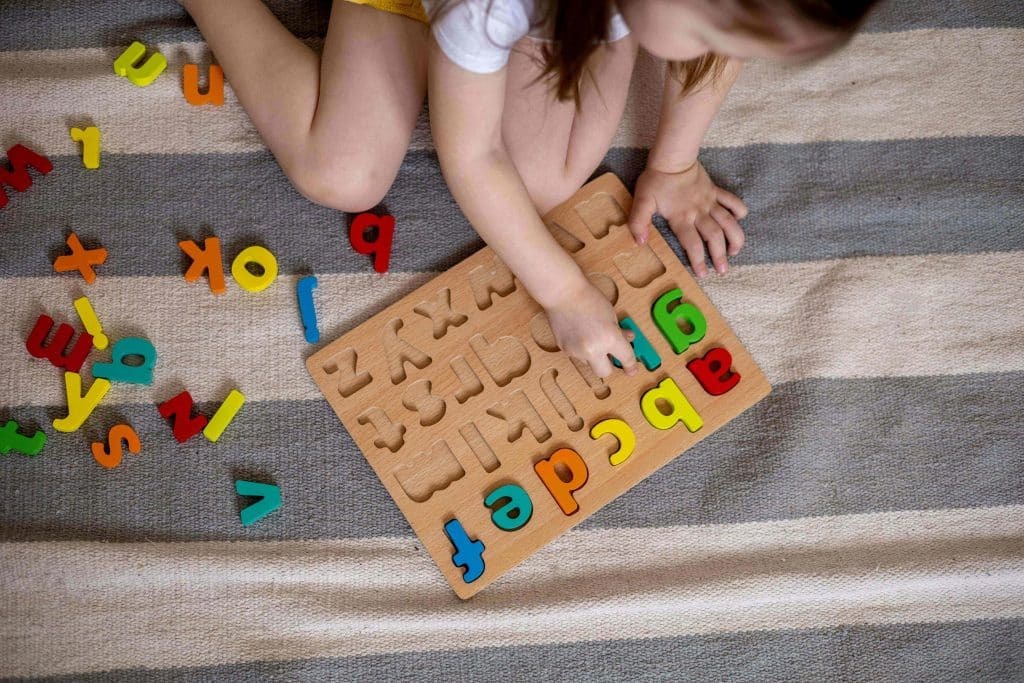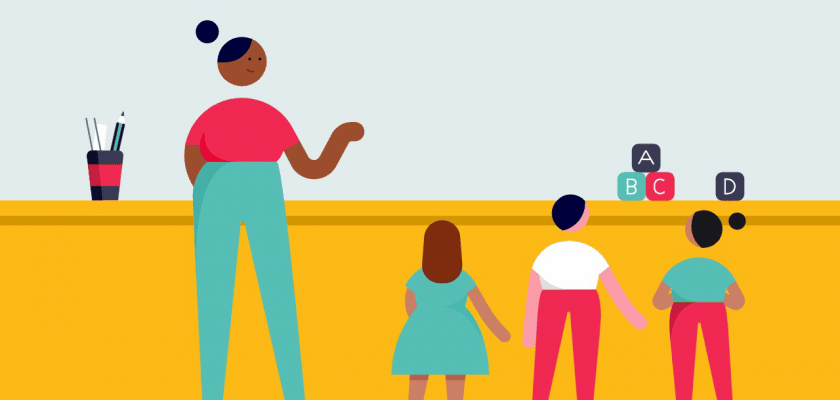Teaching preschoolers is as challenging as it is fun and rewarding. Tackling three- to five-year-olds and dealing with their mischievous nature requires ample energy and playfulness on your part. You also need to be on the constant lookout to make sure no child does something silly—such as gobble up marbles as if they were cream puffs—but that is not without its charms, either.
How do you entertain children at that age and get them to learn new skills and abilities along the way? Certainly not by winging it and entering a classroom unprepared for the day.
You need preschool lesson plans to give you a clear idea of what you’re doing, what objectives you need to meet in each class, and how you will do it.

Source: @darby via Twenty20
Explore Our Preschool Lesson Plans
If you’re in a hurry and need good, curriculum-aligned resources for your next class, check out our list of ready-made preschool lesson plans that you can download and use instantly:
- Cut and Create! Transportation
- Calendar Crafts: Things To Make and Do for Each Month
- Primarily Patterns Gr. PK-1
- On a Lark!: Creative Movement for Children
- Storytelling: Nursery Stories & Songs Gr. K
- My Inside Weather Feelings Lesson
- Math Practice Simplified: Preschool Concepts (Book A): Classifying, Matching, Shapes, and Numerals
- More Than Pink & Blue: How Gender Can Shape Your Curriculum
- Let’s Chat Conversation Cards | Enjoy the Journey
- Creative Corners for Early Learners: Easy-To-Create Seasonal Projects for a One-of-a-Kind Learning Environment
- Revise Initial Sounds & Three Letter Words (with activity cards)
- Let’s Learn About Teamwork
- Mrs. E’s Extraordinary Manners, Courtesy, and Social Skills Activities
- Mapping Skills with Google Earth – Digital Lesson Plan Gr. PK-2
- Color: A Cross-Curricular Unit
Creating Preschool Lesson Plans—What’s Different About Them?
When writing lesson plans, you need to focus on the objectives, class timelines, assessment methods, and other standard lesson elements—but lesson plans for preschool classes are a bit different.
You need to keep in mind who you’re teaching. Kids will have plenty of time to deal with quizzes and worksheets in first and second grade. With preschoolers, your focus should be on interesting activities and the materials needed to fulfill those activities.
If you want to create your own plan, find a lesson plan template with more room to write about materials and activities instead of assessments.
Activities, Materials, and Schedules
When choosing activities, try to pick the ones that your group will respond to the best. You can always have trial runs in the beginning until you learn what motivates your students and how you can make them open to learning new knowledge and skills.
When it’s time to list out materials, think thoroughly and come up with every single item you’ll need. There are few worse scenarios than hyping the children up for a game or other activity only to make them sit around doing nothing just because you’ve forgotten something like chalk or a plastic bottle.
The table shows some ideas for activities you can add to your class and the materials you’ll need:
| Common Preschool Lesson Activities | Examples of Necessary Materials |
| Paint with an easel Paint outside with paintbrushes and a bucket of water Make a necklace with string, cereal, and beads Draw with chalk on a sidewalk Sort buttons based on different attributes (color, number of holes, size, etc.) Apply stickers to paper Use cookie cutters and toothpicks to make shapes out of playdough Practice lacing Build a tower with letter blocks | Markers Glue Letter blocks Pencils Pens Chalk Googly eyes Pom poms Notebooks Stickers Paint Clipboards Board games Crayons |
As for making a schedule for your class, you can write one, but don’t let it guide your classes. Preschool lessons, more than any other type, require you to be much more flexible. Leave room for adapting your schedule on the spot and go with the flow by letting your little students continue doing what interests them.

Source: @Plotulit via Twenty20
Online Preschool Lesson Plans
Don’t have time to create your own lesson plan? Don’t worry—you can try your luck on the good, old internet.
You can easily find dozens of websites offering resources for preschool teachers, including lesson plans. A bit of research will show that you can get:
- Free preschool lesson plans
- Paid lesson plans for preschool
Free lesson plans are usually worth as much as they cost—nothing. Once you dig into them, you’ll see they’ve been knocked together and are of shoddy quality. Most of these plans fail to meet curriculum standards, don’t focus on activities and materials, and don’t leave space in the schedule for children who need a nudge to get going.
If you want to download a ready-made lesson plan that is worth your time, you’ll need to shell out some money. The problem is that you usually only get a snippet for free—you don’t know what the whole lesson plan looks like until you pay the full price. Since most of these websites charge per download, you can spend hundreds of dollars each year on lesson plans that you can’t use in your classroom.

Source: The Teacher Next Door
If only there were a platform that offers high-quality lesson plans and other teaching resources for an affordable monthly subscription fee…
Find Top Lesson Plans for Preschoolers—Use Teach Simple
Unlike most websites that charge per download and take thousands of dollars from teachers, Teach Simple is a subscription-based platform. After you sign up and make use of our 30-day free trial, you’ll only pay a cost-effective monthly fee which gives you access to as many materials and lesson plans as you need that can be downloaded at no extra charge.
Our resources are made for teachers like you by other teachers who understand the challenges of lesson planning for different grades and subjects. We make sure that we post only high-quality materials made by educators who have experience with teaching preschoolers.
There’s no reason to waste hours of your day sweating over an empty sheet of paper as you try to come up with a lesson plan or paying over the odds for lesson plans that are mediocre at best. Teach Simple is the ultimate solution for busy teachers, and the benefits of using our platform abound.
Why Choose Teach Simple
With Teach Simple, you’ll have access to thousands of materials that will help you not only organize your lessons but also enrich them and make them more enjoyable for both you and your students. Teach Simple doesn’t focus on preschool teachers only—even if you move to a different grade, you can still use the same platform to find everything you need.
Our platform offers:
- High-quality materials—Regardless of whether you’re looking for a lesson plan or a fun song or video to emphasize a learning point, you’ll find only top-notch content on Teach Simple. Our contributors are professional teachers, and every piece of material we post gets reviewed by other teachers to ensure you’ll be able to use it in your classroom
- Material variety—You can quickly become your students’ favorite teacher by making your lessons fun and engaging. Enrich your classes with flash cards, e-books, audiobooks, graphics, fun projects, games, and book companions. You’ll also find a variety of lesson plans for various grades (kindergarten, elementary school, middle school, and high school) and subjects (math, science, social studies, ESL classes, etc.)
- Unlimited downloads—When you subscribe to our platform, you’ll be able to download as many lesson plans, printables, or games as you want without any additional fees
- Financial support for contributing teachers—We know it can be difficult to be a teacher despite how fun it is. That’s why we give 50% of our monthly revenue to our contributors. By subscribing, you’ll support your colleagues directly
Preschool Lesson Plan Themes
Preschoolers are only getting used to the idea of learning. While your job is not to teach them hard concepts, you need to develop their learning skills and give context to the basic ideas they learn about.
A great approach to lesson planning for preschoolers is to use preschool lesson plan themes. You can choose an overarching theme that matches a season or your students’ interests and download related lesson plans and materials from Teach Simple. You’ll keep students’ attention and their excitement for learning with no trouble.
You’ll find many benefits to using preschool-themed lesson plans:
- Themes help keep students focused on lessons
- They help children connect different concepts and start considering them as a whole
- It’s easier to engage kids in different learning activities
- You can connect different subjects by using the same theme
- You can plan your lessons based on your students’ interests
Always try to choose themes that will capture the kids’ attention and show them that learning can be super fun. Fairy tales, continents, animals, alphabet, or specific holidays—your imagination is the limit.

Source: @Kolpakova via Twenty20
Lesson Plan Themes for Preschoolers—Examples
When you look up preschool lesson plan themes, you’ll find hundreds of examples online. That’s why it’s important to pick the ones that will go down well with your group. You should also pick themes that correlate with one another and keep the learning flow uninterrupted. A weekly lesson plan template can help you organize themes and keep track of how you plan to transition between them.
A great way to choose themes is to make them topical and related to the time of the year. Here’s an example of themes you can select according to your monthly schedule:
- January—Snow, ice, winter animals, New Year, and National Pie Day
- February—Forest animals, Groundhog Day, dental health (National Children’s Dental Health Month), and Valentine’s Day
- March—St. Patrick’s Day, fitness, clouds and rain, and spring cleaning
- April—Easter, birds, pond animals, and planting seeds
- May—Butterflies, farms, flowers and bees, and gardening
- June—Insects, camping, summer, and Sun
- July—Beach, 4th of July, ocean animals, and sea
- August—Ice cream, circus, zoos, and Olympics
- September—Back to school, All About Me, fall leaves, and fall colors
- October—Apples, Halloween, pumpkins, and pajamas
- November—Thanksgiving, turkeys, family, and nocturnal animals
- December—Winter, winter clothes, winter sports, and Christmas
Note that some of these themes are not necessarily tied to a certain month, but you can use them as fillers if you can make a good connection with other themes. For instance, you can talk about turkeys whenever, but they obviously go great with the Thanksgiving theme.
Get Free Preschool Lesson Plans With Teach Simple
Themes can help out a lot with adding a framework for the content of your classes, but you still need a well-developed lesson plan that will allow you to keep children motivated and open to learning.
You don’t have to waste hours creating your own lesson plans and as much time going from one website to another to find an online lesson plan that will be good enough for your classroom. Teach Simple is a one-stop source for all your teaching needs, from lesson plans to various materials you can use to get your students excited about learning something new.
Sign up for free with Teach Simple’s 30-day trial offer and explore all the materials that will make teaching preschoolers a piece of cake. You can use the trial period to download as many lesson plans and other materials as you want without any obligations—no questions asked.
Once the trial ends, you’ll remember how painfully time-consuming it was to have tens of tabs open looking for high-quality resources—especially when you know that a great lesson plan is waiting for you on Teach Simple.
